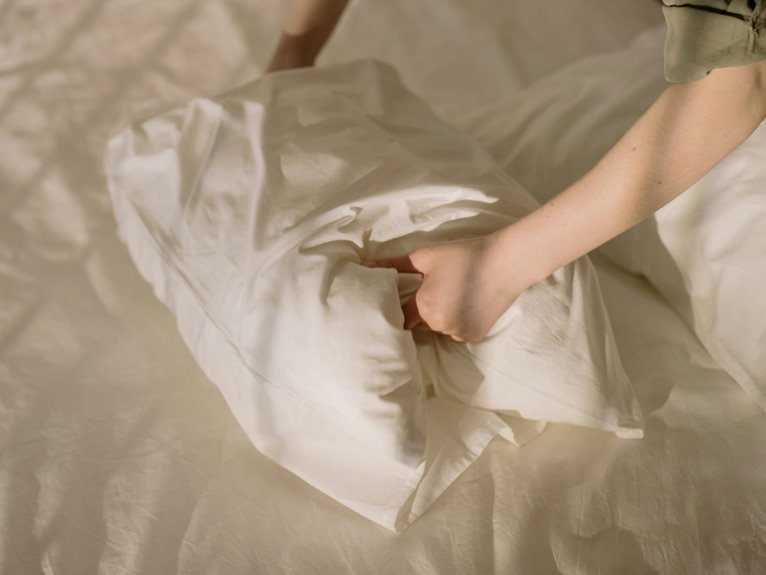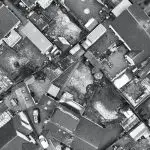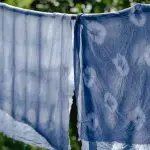To make pillowcases that fit perfectly, you’ll need about half a yard of fabric for twin, full, and queen sizes, accounting for seams and hems. King pillowcases require roughly 1 to 1.25 yards, while California king cases might need even more. Choose fabric widths of 42 to 60 inches depending on size to minimize seams. Don’t forget extra fabric for decorations or errors. Keep these basics in mind as you plan your project, and you can explore tips to get it just right.
Table of Contents
Key Takeaways
- Standard pillowcases need about 22 by 28 inches of fabric, roughly half a yard per case, for Twin and Full sizes.
- Queen pillowcases typically require half a yard of fabric, measuring about 20 by 30 inches plus seam allowances.
- King pillowcases need around 1 to 1.25 yards of fabric for a pair, sized approximately 20 by 36 inches each.
- Fabric widths of 42 to 60 inches work well, with wider fabrics reducing seams and waste for larger pillowcases.
- Always add extra fabric (10-15%) for seams, hems, shrinkage, and decorative trims like ruffles or piping.
Understanding Pillowcase Dimensions
When making pillowcases, you’ll need to know the standard dimensions to guarantee a proper fit. Most pillows come in common sizes like standard, queen, and king, each requiring specific pillowcase measurements.
A standard pillowcase usually measures about 20 by 26 inches, while queen sizes are slightly longer, around 20 by 30 inches. King pillowcases stretch further, typically 20 by 36 inches.
Knowing these sizes helps you cut fabric accurately, preventing excess or shortage. Keep in mind, pillowcases need extra fabric to allow for seams and hems, so always add at least an inch or two to each side.
Understanding these dimensions assures your pillowcases will fit snugly and look neat on any bed without unnecessary adjustments later.
Fabric Requirements for Twin Bed Pillowcases
When making pillowcases for a twin bed, you’ll want to know the standard pillow dimensions to guarantee a perfect fit.
Typically, twin pillows measure about 20 by 26 inches.
To cover one pillow, you’ll need roughly half a yard of fabric, but double-check your measurements before cutting.
Standard Pillow Dimensions
Although pillow sizes can vary, standard twin bed pillowcases typically require fabric measuring about 20 by 30 inches.
These dimensions accommodate the usual twin pillow size of approximately 20 by 26 inches, allowing for seam allowances and a comfortable fit.
When selecting fabric, you should consider the pillow’s depth to guarantee enough material for a proper enclosure without excess bulk.
Keep in mind that standard pillows often have a consistent size, making it easier for you to calculate fabric needs accurately.
If you’re sewing pillowcases for twin beds, sticking to these standard dimensions helps maintain uniformity and assures your cases fit snugly.
Understanding these measurements lets you plan your fabric purchases efficiently and avoid waste.
Recommended Fabric Yardage
Knowing the standard pillow dimensions helps you determine how much fabric you’ll need for twin bed pillowcases. For a typical twin pillow measuring 20 by 26 inches, you’ll want to cut fabric that’s about 22 by 28 inches to allow for seams and a comfortable fit.
When planning yardage, buy at least 1/2 yard of 44-45 inch wide fabric to cover one pillowcase. If you’re making a pair, 1 yard will suffice.
Remember to account for shrinkage by pre-washing your fabric before cutting. Also, consider adding extra fabric if you want decorative trims or a flange.
This straightforward yardage guide helps you purchase just the right amount, saving you money and ensuring your pillowcases fit perfectly.
Fabric Requirements for Full Bed Pillowcases
When making pillowcases for a full bed, you’ll need to know the standard pillow dimensions to get the fabric right.
Calculating the yardage carefully guarantees you have enough material without waste.
Don’t forget to add seam allowances to your measurements for a perfect fit.
Standard Full Pillow Dimensions
A standard full pillow typically measures 20 by 26 inches, so you’ll need fabric that accommodates these dimensions plus extra for seams and hems.
When choosing fabric for full pillowcases, plan for at least 22 by 28 inches per case to guarantee proper coverage and a comfortable fit. Adding about an inch on each side for seam allowances and hems assures durability and a clean finish.
Remember, the fabric width should be wide enough to allow for folding and stitching without restricting the pillow’s shape.
Whether you’re sewing one pillowcase or several, factoring in these dimensions helps you avoid shortages and guarantees your pillowcases fit perfectly on full-sized pillows.
Keeping these measurements in mind makes fabric selection straightforward and efficient.
Fabric Yardage Calculations
Having clear measurements for full pillowcases sets the stage for calculating the fabric yardage you’ll need. A standard full pillowcase typically measures 20 by 26 inches.
To determine fabric requirements, add extra length for hems and folds—usually around 2 to 4 inches on each side. Multiply the adjusted width by the length to get the total fabric size per pillowcase.
Since fabric is sold by the yard, convert your measurements to yards, remembering that 1 yard equals 36 inches. For one full pillowcase, expect to use about 1 yard of fabric with standard widths.
If you’re making two pillowcases, simply double that amount. This straightforward calculation helps you buy just enough fabric, minimizing waste and ensuring a perfect fit for your full bed pillows.
Seam Allowance Considerations
Since seam allowances affect the final size of your pillowcases, you’ll need to include extra fabric beyond the measured dimensions.
For a full bed pillowcase, typically measuring about 20 by 26 inches, adding a standard ½-inch seam allowance on all sides means you should add an extra inch to both the length and width. This guarantees your pillowcase will fit properly after sewing.
If you plan to use French seams or wider hems, adjust your fabric requirements accordingly. Neglecting seam allowances can lead to pillowcases that are too small or misshapen.
Always double-check your pattern instructions for specific seam allowance recommendations, and remember that accurate fabric calculations avoid costly mistakes and save you time during sewing.
Fabric Requirements for Queen Bed Pillowcases
Queen bed pillowcases typically require about half a yard of fabric per case, depending on the pattern and seam allowances you choose.
When planning your fabric purchase, keep these points in mind:
- Standard Size: Queen pillowcases usually measure 20 x 30 inches, so confirm your pattern matches this size.
- Seam Allowances: Add at least 1/2 inch around edges for seams to guarantee proper fit.
- Pattern Direction: If your fabric has a directional print, allow extra yardage to align the design correctly.
- Extra Fabric: Buy a little extra fabric to accommodate mistakes or shrinkage during washing.
Fabric Requirements for King Bed Pillowcases
When choosing fabric for king bed pillowcases, you’ll need more yardage compared to queen sizes due to their larger dimensions. King pillowcases typically measure about 20 by 36 inches, so you’ll want to guarantee you have enough fabric to cover this size comfortably, including allowances for seams and hems.
For a standard pair, plan on purchasing around 1 to 1.25 yards of fabric, assuming your fabric width is about 44 to 45 inches. If you’re making multiple pillowcases or using wider fabric, adjust accordingly.
Remember to factor in shrinkage if your fabric is pre-washable. Choosing soft, durable fabric like cotton or linen will make your king pillowcases both comfortable and long-lasting.
Always double-check measurements before cutting to avoid wasting material.
Fabric Requirements for California King Pillowcases
Although California king pillowcases are longer and narrower than standard king sizes, you’ll still need to guarantee you have enough fabric to accommodate their dimensions of approximately 20 by 36 inches.
To make pillowcases that fit perfectly, consider these key points:
- Fabric Length: Purchase at least 1 yard of fabric per pillowcase to allow for seams and hems.
- Fabric Width: Standard fabric widths (42-45 inches) are sufficient for one pillowcase per yard.
- Seam Allowance: Add about 1 inch total for seams, ensuring a comfortable fit.
- Shrinkage Factor: Pre-wash your fabric to avoid size issues after laundering.
Choosing the Right Fabric Width for Pillowcases
Ensuring you have enough fabric length is just one part of making pillowcases that fit well. Choosing the right fabric width is equally important because it affects how many pillowcases you can cut from one yard and whether seams align properly. Most fabrics come in widths of 42″, 54″, or 60″. Wider fabric often means fewer seams and less waste.
Here’s a quick look at common fabric widths and how they relate to pillowcase sizes:
| Fabric Width | Pillowcase Size | Notes |
|---|---|---|
| 42 inches | Standard, Queen | May require seams |
| 54 inches | Standard, Queen, King | Better for larger sizes |
| 60 inches | All sizes | Ideal for minimal seams |
| 108 inches | King, California King | Great for multiple cases |
Pick a width that matches your project size to save fabric and effort.
Tips for Measuring and Cutting Fabric
Before you start cutting, double-check your measurements to avoid mistakes that waste fabric. Accurate measuring and cutting set the foundation for a perfect pillowcase.
Here are some essential tips to keep in mind:
- Use a clear, flexible measuring tape and lay your fabric flat on a smooth surface.
- Mark your measurements lightly with tailor’s chalk or a fabric marker to avoid permanent marks.
- Cut slowly and steadily with sharp fabric scissors or a rotary cutter to guarantee clean edges.
- Always add a little extra fabric for seam allowances, usually about ½ inch, to make sewing easier.
Following these steps helps you work efficiently and reduces fabric waste, assuring your pillowcases come out just right every time.
How to Calculate Extra Fabric for Decorative Elements
When adding decorative elements to your pillowcases, you’ll need to factor in extra fabric beyond the base measurements.
Start by measuring the dimensions of each element—like ruffles, piping, or appliqués—and add seam allowances.
For ruffles, add twice the length of the pillow edge plus an extra 4-6 inches for gathers and hems.
For piping or trim, measure the full perimeter and add 6 inches for seam allowances.
Appliqués require a bit of extra fabric around the design for secure stitching.
Always add at least 10-15% extra fabric to accommodate errors or adjustments.
Frequently Asked Questions
What Are the Best Fabrics for Allergy-Friendly Pillowcases?
Did you know 50 million Americans suffer from allergies? You’ll want to pick tightly woven cotton or silk pillowcases—they resist dust mites and allergens better. Don’t forget bamboo fabric; it’s naturally hypoallergenic and breathable too.
How Do I Care for Homemade Pillowcases?
You should wash your homemade pillowcases gently in cold water and use mild detergent. Avoid bleach and high heat drying to prevent damage. Iron on low heat if needed, and store them in a clean, dry place.
Can I Use Fabric Remnants for Pillowcases?
You can use fabric remnants for pillowcases; they’re perfect for small projects and add charm. Just make sure your pieces are big enough, and you’ll create cozy, unique pillowcases that showcase your creativity and resourcefulness.
What Sewing Tools Are Essential for Making Pillowcases?
You’ll need a sewing machine, fabric scissors, pins or clips, a measuring tape, and thread matching your fabric. A rotary cutter and cutting mat help, plus an iron to press seams for crisp, professional pillowcases.
How Do Pillowcase Closures Affect Fabric Yardage Needs?
Like adding a zipper to a jacket, pillowcase closures like buttons or envelopes need extra fabric. You’ll want to account for overlap or hems, so your yardage increases slightly to guarantee a proper, neat finish.
- Where to Buy Sherpa Suede Fabric - July 12, 2025
- How to Draw or Illustrate the Texture of Suede Fabric - July 12, 2025
- What Is Baseball Suede Leather Fabric? - July 12, 2025







